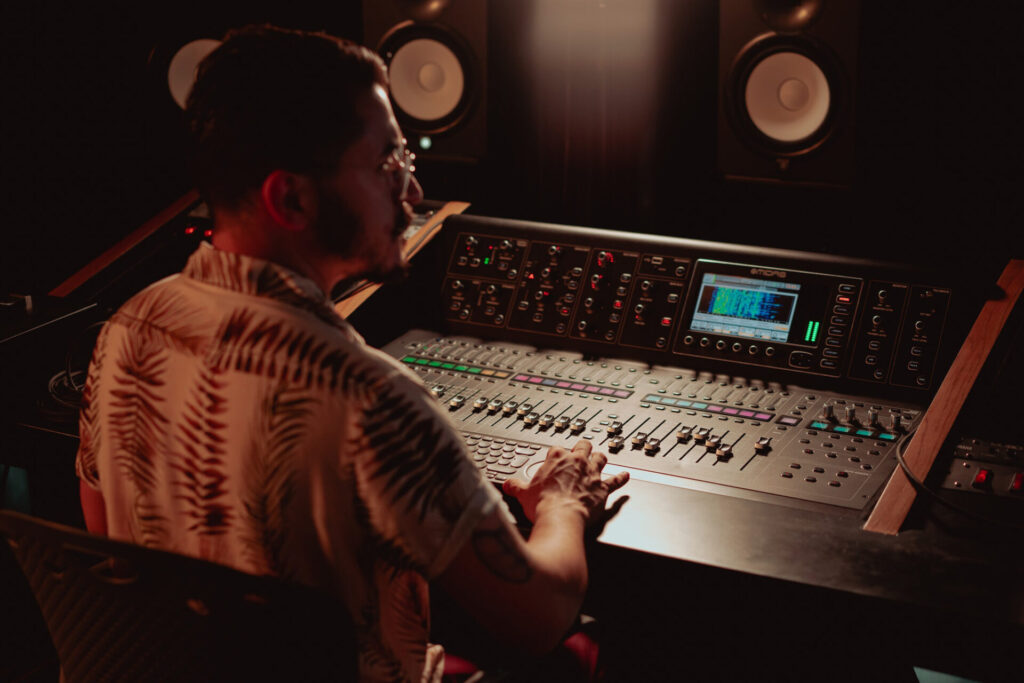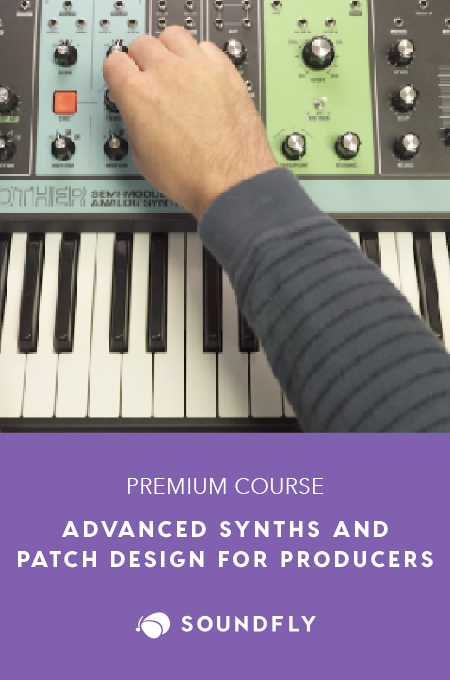+ Ryan Lott (of Son Lux) teaches how to build custom virtual instruments for sound design and scoring in Designing Sample-Based Instruments.
Certainly we all recognize that if we tried to work on a mix using poor quality speakers set up in a cramped little room with everything pointed all askew, it will result in less than desirable results.
But exactly how big is the benefit to optimizing a mix space setup, beyond simply avoiding obviously poor choices of room and speaker arrangement?
Let’s find out.
How much does a proper speaker setup and mixing space factor into the sound we hear?
To answer this question, let’s first think about all the potential problems inherent in a poor space choice and/or speaker setup within that space. Every surface in any room has the potential to reflect sound back into the space: walls, floors, and ceiling.
Any hard, smooth, flat surface will reflect the sound particularly strongly. So a space with long sections of flat walls and ceilings and a large hard wood floor is going to reflect a lot of sound back into the space. This means the natural reverb in the room is going to be very strong.
1. Reverb
We all know that a little reverb added to a recording is a great way to blend and smooth out sounds, but a lot of heavy reverb is problematic. In the same way, trying to listen to speakers playing sound in a space with heavy reverb makes it difficult to cue in on any details.
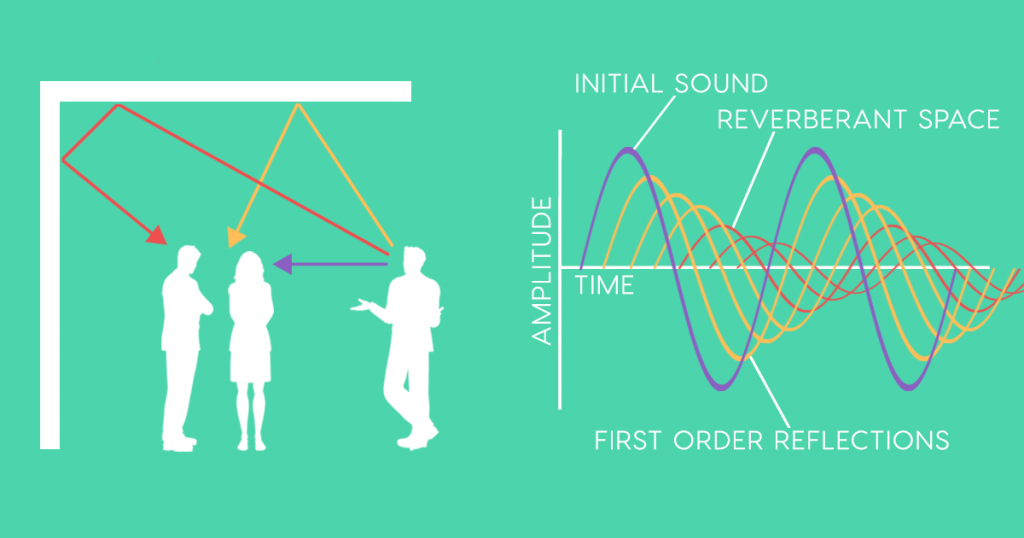
To make matters worse, if your room is oblong shaped, meaning much longer than wide, the timing between the reflected sound from one direction is much different than the other direction, causing an even greater slurring of the reverberant sound.
If any of the walls are very far away, the time delay on the reflected sound can be long enough that some of the reverb will turn into noticeable echoing sound, which can cause total havoc when trying to hear precise timing of different parts in a mix.
2. Phase Issues
Compounding the negative effects of reverb, is the possibility of phase issues due to the reflections off the surfaces of the room. If any of the reflected sound reaches the listener exactly out of phase with other sound reflections, or out of phase with the sound coming directly from the speakers, you get loss of signal due to phase cancellation.
Conversely, if any of those reflections are exactly in phase, those sounds will be boosted loudly above other sounds. Phase cancellation and boosting is frequency dependent, meaning different tones in your sound could appear to be missing or seem unnaturally loud compared to other tones. All due to reflected sound off your walls, floor, and ceiling.
3. Room Resonance
To further exacerbate the issues with reflected sound in your room, there’s also room resonance. This is when the dimensions of the room are just exactly right to reinforce sound of a particular wavelength, or frequency (i.e. tone). Any two parallel surfaces have the ability to reinforce a harmonic set of tones (a fundamental tone and its higher octaves) related to the separation distance between the surfaces.
Most rooms are built with two sets of parallel walls and parallel floor and ceiling. This means you likely have three sets of resonating frequencies in your space. Resonant tones will ring out loudly, like a bell being struck.
Due to the dimensions of most rooms in houses and offices, the loudest of these resonant tones tend to fall right smack in the middle of musical bass sounds, leading to a muddy, boomy sound in your room at those tones. It makes it exceedingly difficult to mix music if all you hear is loud ringing bass.
And, as a result, you’ll likely turn the bass down too much in your mix — leaving it thin and tinny sounding.
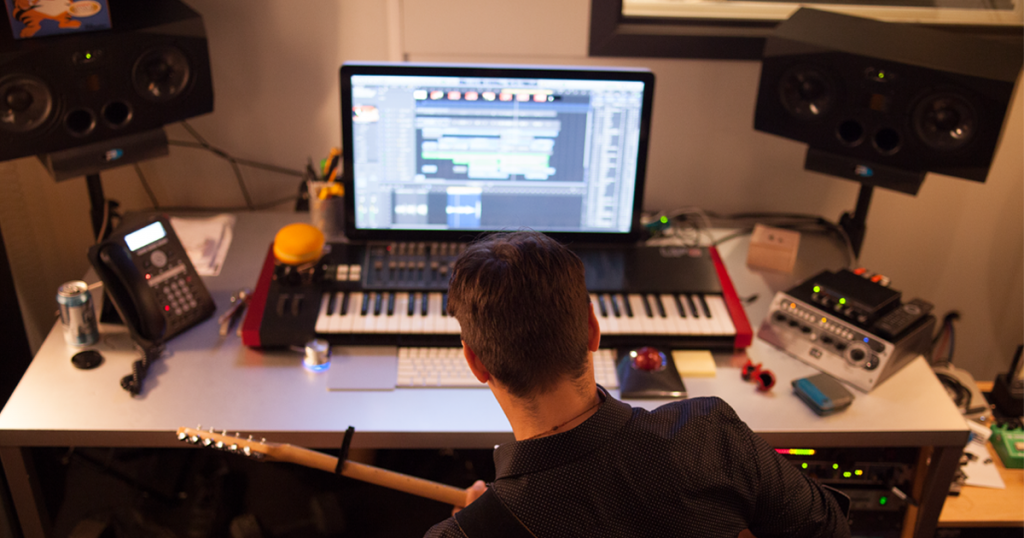
How exactly can you address the potential sonic issues in your mixing space?
To fully address the room you’re doing your mixing work in you would need to accomplish three things:
- Construct your room in such a way that it doesn’t support excessive room resonance,
- Add acoustic material to soften reflections off of each surface for control of both reverb and phase cancellation or echo,
- And, ideally your wall/ceiling/floor surfaces should be made thick and heavy in order to keep outside sounds from leaking into your space and interfering with your ability to hear the details in your mix.
If you’re able to adjust the construction of your room, try not to create too many parallel surfaces, or at least make sure that any parallel surfaces present don’t support the same resonant frequencies as any other parallel surfaces in the same space.
In other words, opposite walls and the floor-ceiling pair of surfaces shouldn’t be the same distance apart as each other, or any multiple of that distance. This minimizes the effects of resonance in the bass range.
You should add some absorptive or diffusing coverings and/or panels to the walls and ceiling in your room, and place carpet on the floor. You don’t need to cover every inch of the space. Just add enough to soften the degree of reflections occurring. You can liken this to spreading a small amount of dust across the surface of a mirror so that it won’t reflect light back so strongly.
+ Read more on Flypaper: “How to Build an Acoustic Diffuser — And Why You Need Diffusion.”
Where should I mount my speakers in the room?
Now that we’ve talked about how to address issues with the room you do your mixing in, let’s talk about how best to place your speakers and listening location within that room.
Imaging is critically important in a mix. That means the sound you hear coming from both speakers should be evenly matched. Your room will reflect sound back to you and resonate sound between parallel surfaces, so they are a part of the “source” of sound that you hear reaching you at your mixing desk/console.
That means the walls and ceiling around each speaker should be as identical as possible in order to ensure any additions to the sound made by the room are equal in both the left and right channel.

If you hear more room reflection added to the left speaker than the right, you might be led to think the sound is louder on the left and you would be tempted to pan your sounds more to the right side than they should be. Align your mixing seat position, and direction you face so that everything you see to your left side seems more or less the same as everything you see to your right side.
If there’s a window in the room, this means you may need to arrange yourself so that the window is directly in front of you or behind you so that you have an even amount of glass surface to your left as to your right that the speakers will reflect off.
Your distance from the speakers, their suggested height off the ground (or table top) and how wide you spread them is often dependent on the size and model of the speakers. Refer to the speaker manufacturer’s suggestions.
Once you have placed them according to their recommendations, oriented around where you have placed your listening location for symmetry in the room, you should now address the strongest surface reflections of sound for this setup.
+ Read more on Flypaper: “Setting Up 5.1 Surround Sound in Your Home Studio.”
The strongest reflections are the ones coming directly off the walls to either side of each speaker, that would reflect sound directly into your ears.
To visualize this, imagine the speakers shooting tennis balls out to each side. Ask yourself where on the walls would those tennis balls strike that would cause them to bounce off in just the right way that they would rebound and hit you in your ear?
At that location on the walls to either side in between the speakers and your listening position you should place more acoustically absorptive materials or sound panels specifically to control the strongest reflections.
The next strongest reflections are similarly located in between the speakers and your listening position, but coming from the wall behind the speakers. Acoustic panels at those locations are also helpful in reducing reflections.
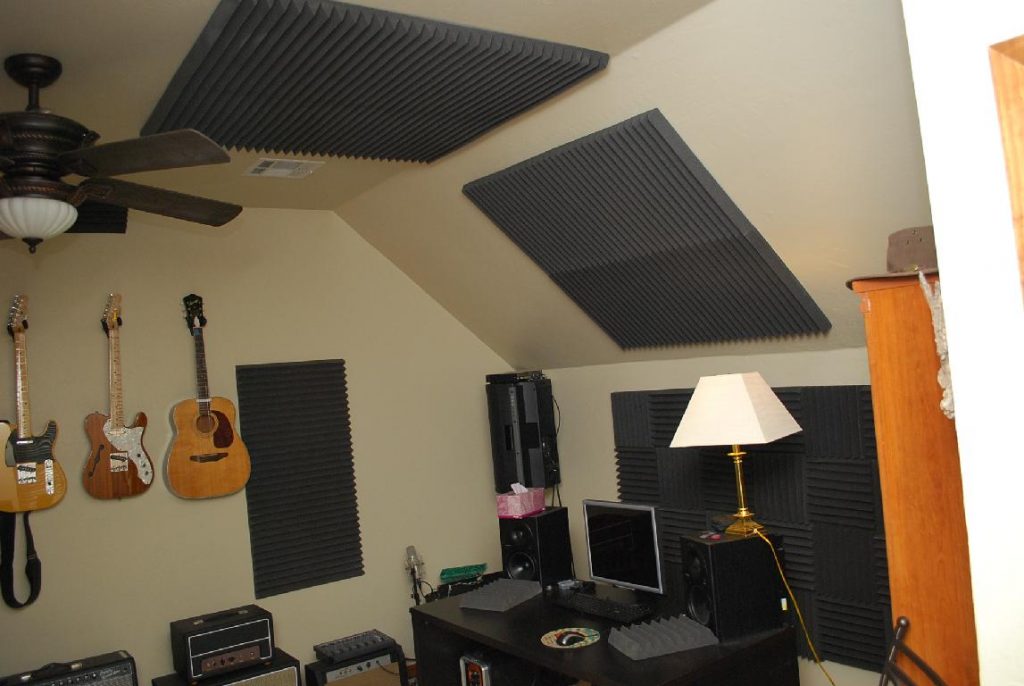
You may still need to apply bass traps in your room in order to fully control room resonance, particularly if your speakers’ best positions are such that they strongly feed certain room resonant frequencies. Bass traps are specially built acoustic panel devices meant to soften room resonance.
They are generally much larger than simple sound panels and typically should be placed in the corners of the room where they are most effective at controlling room resonance.
What about the speakers themselves?
You may have noticed that there has been no mention of the speakers themselves, other than to follow manufacturer’s suggestions regarding placement. This is because it doesn’t matter whether you’re using $5,000 top of the line monitors or $100 garage sale speakers, the interplay between the sound they produce and the surfaces of the room will still be there in either case.
Great speakers in a poor setup — or poorly arranged or designed room — can have a major negative impact on sound, while basic, average speakers in an optimized space may give you an even, balanced, accurate tonal and spatial reproduction of sound allowing you to create a precise mix.
So why not aim for both?
Buy the best mixing monitors you can afford and place them in a room that you’ve purposely set up and addressed for optimal results from any speakers.
Play Your Heart Out!
Continue your learning adventure on Soundfly with modern, creative courses on songwriting, mixing, production, composing, synths, beats, and more by artists like Kiefer, Kimbra, Com Truise, Jlin, Ryan Lott, RJD2, and our newly launched Elijah Fox: Impressionist Piano & Production.
